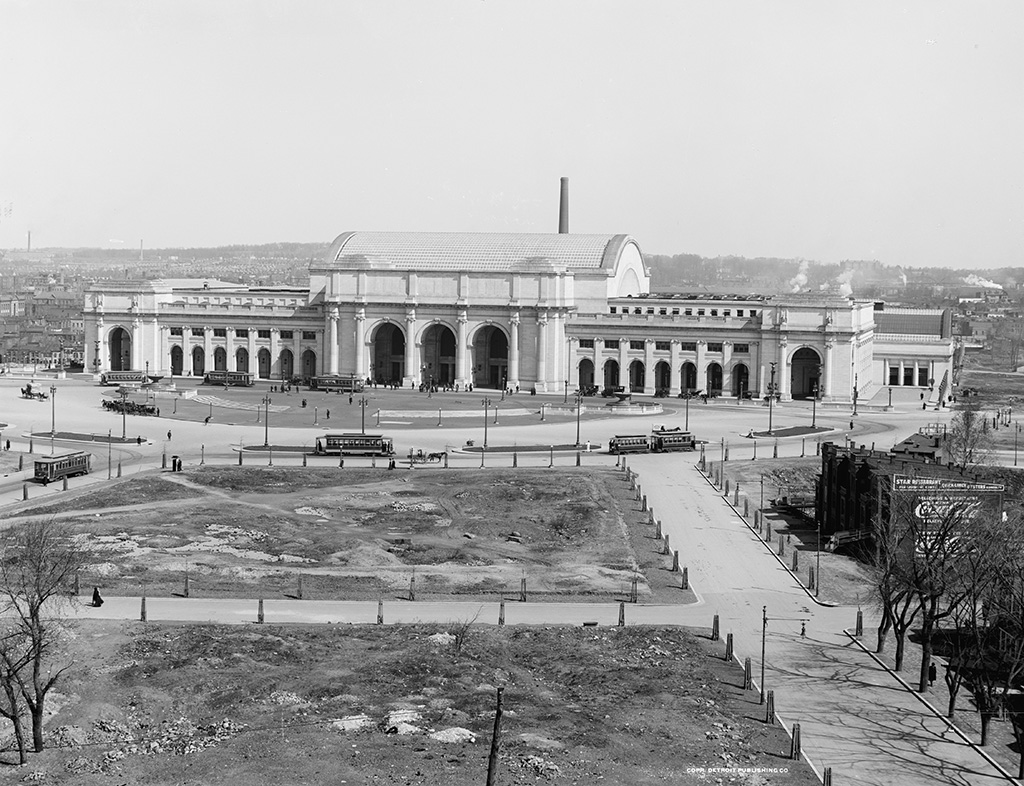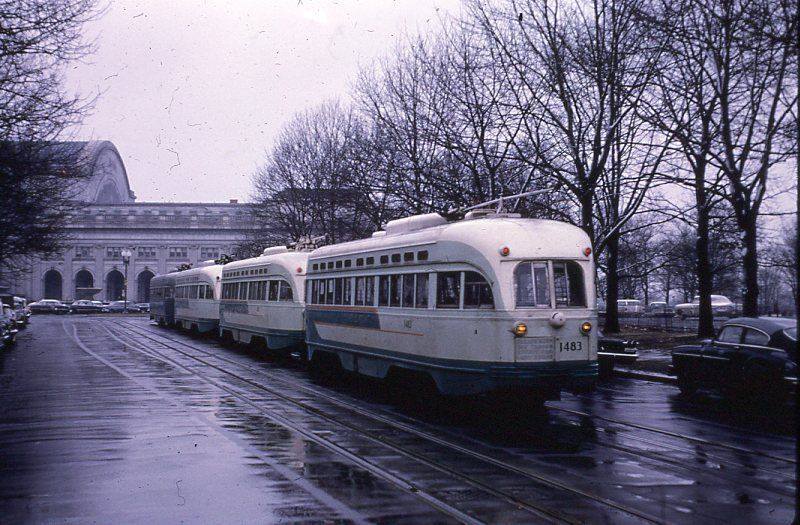History

Washington Union Station is one of the country’s first great union railroad terminals. Designed by renowned architect, Daniel Burnham, the station opened on October 27, 1907 and was completed in April 1908.
During its heyday in the early 1940s, Union Station was a thriving transportation hub serving up to 42,000 passengers daily. After 1945, conditions deteriorated quickly. The demand on transportation during World War II wore greatly on the station, and repairs were often done inexpensively, diminishing the station’s elegance. Public trends shifted from rail to cars and planes for long-distance travel, which further diminished rail passenger revenues, station activity and the feeling of excitement that once percolated through the building.
In the late 1950s, the Station’s owners began searching for an alternative use. In 1964, the District of Columbia designated the building an historic landmark and in 1969 it was listed in the National Register of Historic Places; Columbus Plaza, located in the front of the station, was listed in 1980. During the mid-1960s, the federal government took over the building for use as a new National Visitor Center. However, a lack of funding for the conversion, poor design and changing tastes made it a failure soon after it opened in 1976. Union Station’s low point came in 1981 when a driving rain sent pieces of the ceiling, already damaged by a leaky roof, crashing down into the main waiting room. Most of the building had to be closed, which disrupted travel for the growing number of Amtrak passengers.
In 1981, Congress passed the Union Station Redevelopment Act. It stated that, “the Secretary of Transportation shall provide for the rehabilitation and redevelopment of the Union Station complex primarily as a multiple-use transportation terminal serving the Nation’s Capital, and secondarily as a commercial complex, in accordance with the following goals:
- Preservation of the exterior façade and other historically and architecturally significant features of the Union Station building;
- Restoration and operation of a portion of the historic Union Station building as a rail passenger station, together with hold facilities for charter, transit, and intercity buses in the Union Station complex;
- Commercial development of the Union Station complex that will, to the extent possible, financially support the continued operation and maintenance of such complex; and
- Withdrawal by the Federal Government from any active role in the operation and management of the Union Station complex as soon as practical and at the least possible Federal expense consistent with goals set forth in subsections (a) through (c) of this section.”

In 1983, the United States Secretary of Transportation established the Union Station Redevelopment Corporation (USRC) to assist with the effort of restoring Union Station. The creation of USRC brought together the key stakeholders – federal government, local public and private sector leaders and Amtrak. USRC joined with private developers to create a $160 million plan that combined retail services and expanded train and transportation facilities in the restored, rehabilitated building.
Since then, the station has grown to become a heavily utilized multimodal center with over 100,000 visitors daily. To preserve the historic integrity and preserve the user experience, USRC has been leading the charge in station enhancement projects, earthquake repairs, and long-term planning for the demands of the station’s 2nd Century.

